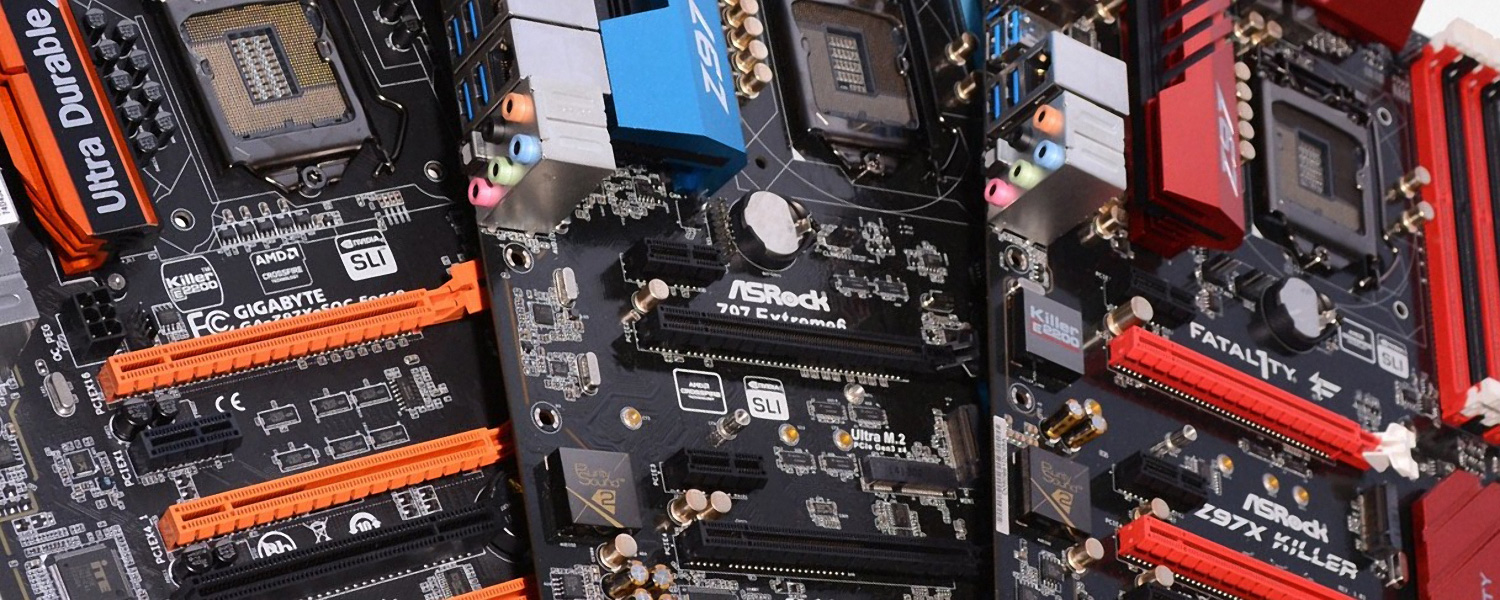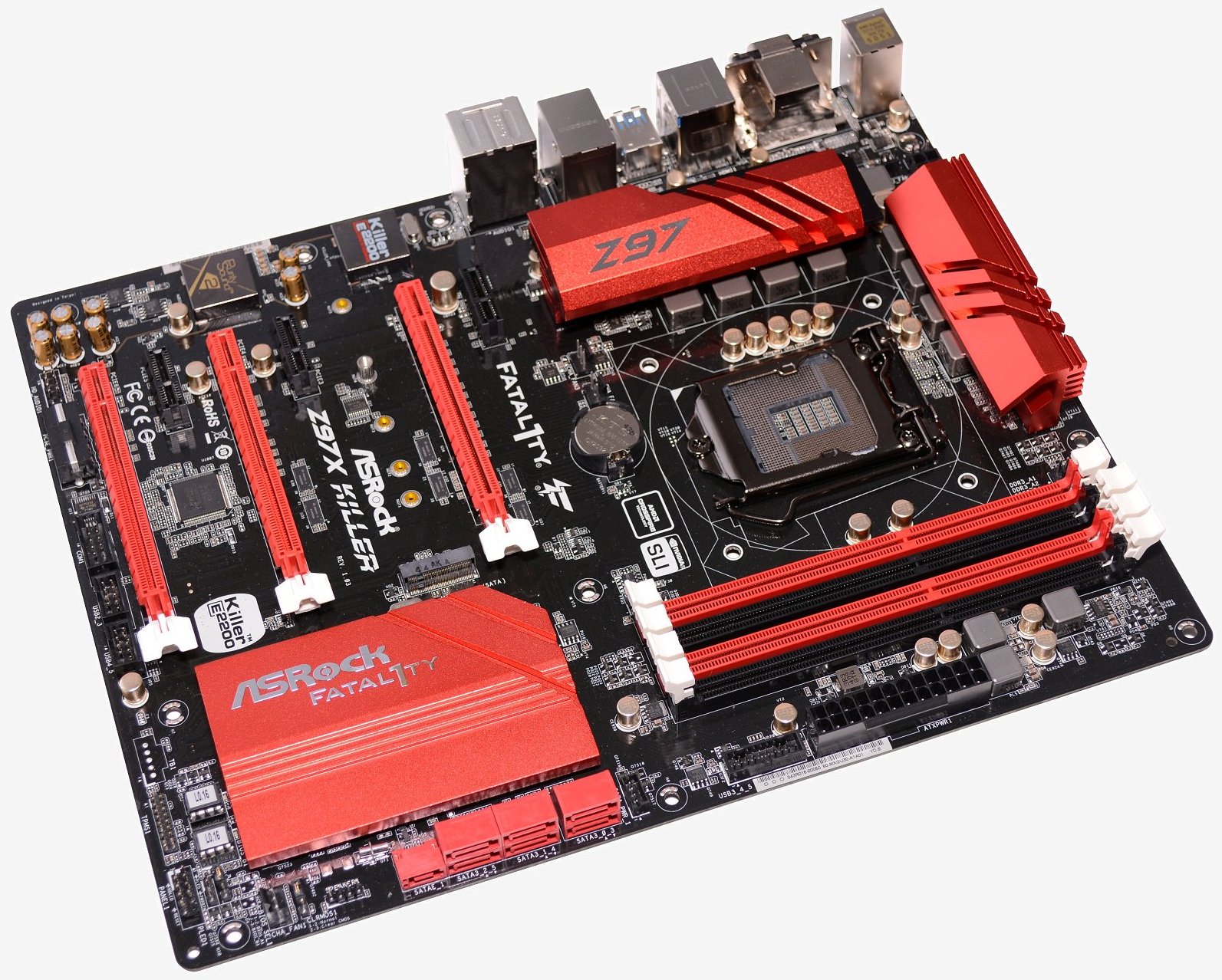Asrock Z97X Killer
Branded with the Fatal1ty logo, the latest 'Killer' series motherboard is designed to be a gamer's best friend. While many of the features found on the Z97 Extreme6 are still present, some have been tweaked slightly in an effort to make them more appealing to gamers.
Yes, the Z97X Killer sports the Qualcomm Atheros Killer E2200 series PCIe x1 Gigabit LAN controller. Qualcomm says that through using cutting-edge technology their network controllers are up to five times the speed of the competition. They supposedly allow for faster downloads, better streaming video, and smoother gaming.
Sounds great, but it's a massive load of rubbish. In reality, they are just massively overpriced network controllers that perform no better than the competition. As big as the Internet is, nowhere on it will you find tangible evidence that the Killer E2200 can back up any of the claims made by Qualcomm.
Despite this, top tier manufacturers push these controllers on all these gaming focused motherboards as if they believe the claims – or maybe it's just that hype sells.
The same Atheros Killer E2200 controller is also on the Fatal1ty Z97 Killer and Fatal1ty H97 Killer. The good news for the H97 chipset is that the Fatal1ty H97 Performance exists, replacing the Killer E2200 with the more credible Intel I218V. (Come on Asrock... where is the Fatal1ty Z97X Performance?)
Moving past the networking side of things, the Z97X Killer features the same audio solution as the Z97 Extreme6, Purity Sound 2.
The board also features three PCIe x16 slots, though the configuration is slightly different. The Z97 Extreme6 only offers two PCIe 3.0 x16 slots with a third PCIe 2.0 x16 slot hardwired for x2 bandwidth and we suspect that is because of the Ultra M.2 socket, which hogs those PCIe lanes to the CPU.
However, the Z97X Killer doesn't feature an Ultra M.2 socket and therefore can offer three PCIe 3.0 x 16 slots. That said only the first is hardwired for x16 bandwidth while the secondary slot offers x8 bandwidth and the third x4 bandwidth. It's a small detail but it will make the Z97X Killer far better suited for 3-way GPU setups.
While the Ultra M.2 socket has been removed, the Z97X Killer still includes a standard M.2 socket supporting SATA 6Gb/s modules and PCI Express modules (10Gb/s). Of course, the standard six SATA 6Gb/s ports connected to the chipset are also included along with the SATA Express connector which is shared with SATA ports 4, 5 and the M.2 socket.
On the I/O panel, you'll find a PS/2 port, two USB 2.0 ports (one of which is a Fatal1ty Mouse Port), six USB 3.0 ports, D-Sub (VGA) output, DVI-D output, HDMI output, Optical S/PDIF output, one Gigabit LAN port and five audio jacks. Note that when compared to the Z97 Extreme6 the VGA output has been added while DisplayPort has been removed.
The board has been given the same XXL aluminum alloy heatsink, premium alloy chokes, Dual-Stack MOSFETs, NexFET MOSFETs and 12K Platinum Caps (100% Japan made high quality conductive polymer capacitors) as the Z97 Extreme6. However, the Z97X Killer has been downgraded to include an 8-phase power delivery system.
Asrock has added what they call gaming armor, which includes a hi-density power connector for the CPU, 15μ¬ gold contact in DIMM slots for the memory modules and 15μ¬ gold contact for the primary PCIe x16 slot.
The Z97X Killer is a great looking board that will handle 3-way multi-GPU setups better than the Z97 Extreme6. Our only concern is that the Killer E2200 network controller will inflate the price (think original Gigabyte Killer series), but pricing seems realistic as the Z97X Killer costs just $160, a great value considering the package.
Direct competition will come from the Gigabyte G1.Sniper Z97 which costs $170, though that board neglects to include an M.2 socket or SATA Express support, which is a bit weak. That said, those features are included on the Z97X-Gaming 5, another $160 gaming Z97 board from Gigabyte.











